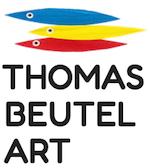Creative Process Talk
This is my talk on my creative process that I presented to about 20 people at the Art Container at Playland at 43rd on Feb 8, 2020. The talk covers some of the tools I use to maintain focus and to stay inspired as I work on lengthy art works.
The talk is about 30 minutes and it was followed by 10 minutes of questions.
In the talk I mention four main tools. The purpose of these tools is to get out of my own way, so that I can stay focused on creating. They are:
– Mind maps. I use this tool whenever I need to get a big picture of an idea or project. I like mind maps because they are rapid and loosely organized. The act of creating a mind map rapidly means that I don’t allow my inner editor time to reject parts of an idea. All parts are written down, regardless of how silly it is. Likewise, I don’t allow my inner organizer to spend time trying to figure out how to organize the parts or make it look pretty. Organization is not the goal of a mind map. Getting as many concepts on paper rapidly as possible is the goal. You can find a good overview of mind maps at https://lifehacker.com/how-to-use-mind-maps-to-unleash-your-brains-creativity-1348869811
– The Creative Sandbox. I highly recommend Melissa Dinwiddie’s book The Creative Sandbox Way. It lists ten guideposts for maintaining a creative practice. For me the foundation of my creative practice is the guidepost #4 known as Think Tiny and Daily. This guidepost calls you to create something everyday, even if you can only spend a few minutes at it. In my practice, I aim to devote at least 20 minutes a day working on something creative. Find out more about Melissa’s book at https://melissadinwiddie.com/csw-book/
– Dream Practice. The purpose of my dream practice is to invite new ideas and inspirations into my consciousness every day. I usually do my dream practice right after meditation in the morning, when my mind is calm and open to new ideas. My aim is to find 2 or 3 new ideas each day and record them in my daily journal. My journal has become a sort of encyclopedia of creative and crazy ideas, from which I choose new art projects to create. See my post on the dream practice at https://blog.hsp.world/want-to-boost-your-creativity-try-a-dream-practice/
– Scrum for One. Scrum and the Agile process is a popular project management strategy for software development teams. I’ve adapted some of the principles of Scrum to my own personal projects, in order to stay focused on my projects. As I see it, the key benefit of Scrum for One is the daily check-in where I ask myself how I’m doing and I think about the progress I’m making. A good overview of Scrum for One is available here: https://www.lifehack.org/articles/featured/scrum-for-one.html
Have you incorporate any of these techniques in your creative practice? Are you using other techniques to stay focused? Let me know in the comments.
